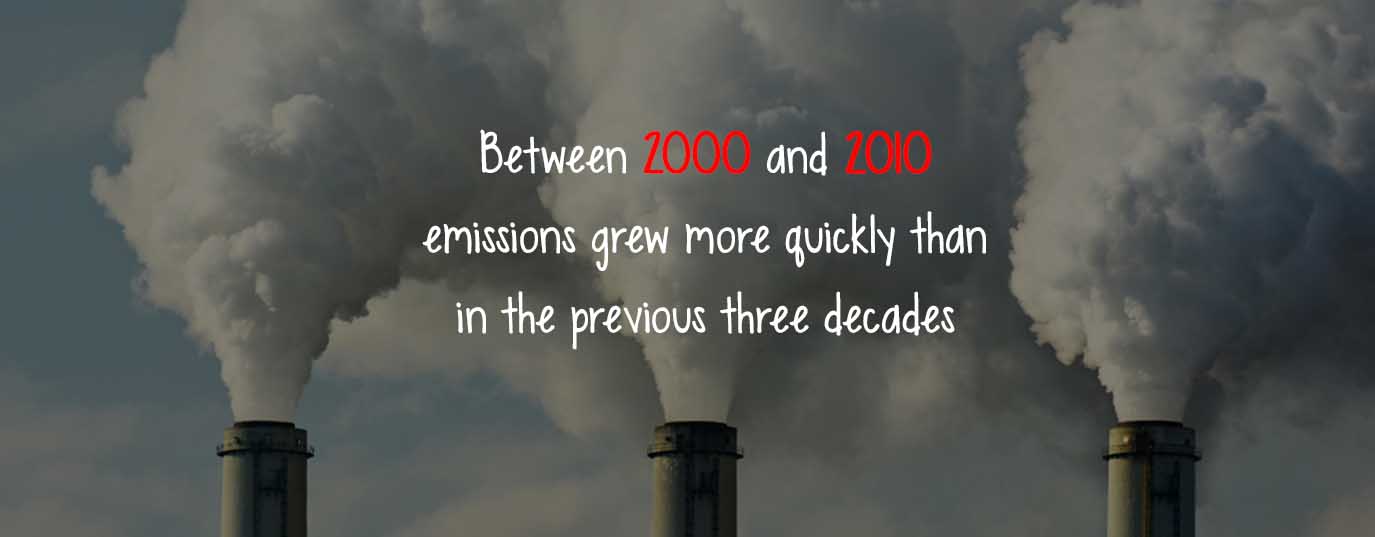Over 1.5°C: call for action against global temperature increase
Tripling renewable energies by 2030 will be crucial, but what other measures can we take to limit the rise?
The increase in average global temperatures over 12 months has exceed the 1.5°C threshold for the first time. The European Union’s Copernicus climate change service has confirmed the highest recorded temperatures to date, 0.64°C above the 1991-2020 average, 1.52°C greater than pre-industrial levels.
But it hasn’t yet exceeded the Paris Agreement limit, since to do so would require such an increase over 10 consecutive years. It just goes to show, however, that keeping global warming below 1.5°C is going to be difficult.
That said, the increasing number of countries and corporations committing to carbon neutrality does indicate a significant change in climate discourse worldwide. The world is indeed progressing toward a future with net-zero emissions, with record growth in areas such as renewable energy. In six years’ time, renewable energies will amount to 77% of total installed power capacity and 68% of all electricity generated.
Yet, as IRENA (the International Renewable Energy Agency) points out, an integrated focus is needed that also grapples with questions such as energy efficiency, sustainable mobility and carbon capture.
What will I learn from this article?
More efficient energy in the face of temperature increases? Where can we save
 One of the key strategies for limiting the rise in temperature is energy savings. Explained in this article, the more energy we manage to save, the fewer CO2 emissions we will generate. This implies the need to adopt energy efficiency measures at all levels, from homes to whole industries.
One of the key strategies for limiting the rise in temperature is energy savings. Explained in this article, the more energy we manage to save, the fewer CO2 emissions we will generate. This implies the need to adopt energy efficiency measures at all levels, from homes to whole industries.
The IEA has come up with some stark figures: energy intensity (the energy needed for each unit of GDP) must be reduced by 4% globally from now until 2030. That’s equivalent annually to saving all the energy China consumes, or over four times the gas the European Union imported from Russia in 2021.
Changes in mobility: more electric and more sharing
Transport continues to be responsible for 24% of direct CO2 emissions, from the burning of fossil fuels, the IEA says. Thankfully, electric mobility has become a brilliant star in the progress toward energy transition. The latest data analyzed by the agency shows electric vehicles will avoid the use of 5 million barrels of oil per day by 2030.
But electric vehicle growth depends ultimately on a massive increase in recharging infrastructure over the next decade, as well as financial and fiscal incentives to promote their adoption.
“Electric vehicles will avoid the use of 5 million barrels of oil per day by 2030”
We will also have to make more efforts to reduce journeys. Urban planning will have to incorporate the transport sector through models such as 15-minute cities. This idea aims for all essential services such as supermarkets, pharmacies, schools, and leisure and work facilities to be reachable from homes in 15 minutes - either walking, by bicycle or public transport.
Carbon-neutral buildings: renovate to decarbonize
To advance toward carbon neutrality, and limit temperature increases, every new building will be built according to energy efficiency standards. We cannot, however, allow ourselves to ignore the buildings which are already exist.
In this respect, renovation rates should be improved significantly. It’s not just a question of rebuilding or remodelling, but also of re-imagining and re-designing our existing built spaces so that they are more respectful to the environment. This involves adopting technologies and sustainable materials, as well as construction practices, which reduce energy consumption and carbon emissions to a minimum.
Critical to this process is the decarbonization of heating and cooling systems, which represent a considerable share of the energy demand in a building. Their transition to cleaner and more efficient solutions, such as air source heat pumps , can have a significant impact on our carbon footprint.
Carbon sinks, key to absorbing emissions
 As indicated in Spain’s long-term decarbonization strategy, to achieve national climate objectives and limit the temperature increase, it is necessary to complement emission-reduction efforts with measures to remove existing carbon from the atmosphere. Forests, soils and oceans are the main natural carbon sinks, deposits which absorb and store carbon dioxide (CO2), reducing its atmospheric concentration.
As indicated in Spain’s long-term decarbonization strategy, to achieve national climate objectives and limit the temperature increase, it is necessary to complement emission-reduction efforts with measures to remove existing carbon from the atmosphere. Forests, soils and oceans are the main natural carbon sinks, deposits which absorb and store carbon dioxide (CO2), reducing its atmospheric concentration.
Decarbonization strategies like the Spanish one (based on EU directives) aim to mitigate 90% of total gross emissions with respect to 1990. Natural sinks are expected to absorb at least the remaining 10%.
Forests and oceans are estimated to absorb 50% of the CO2 emitted by human activities. Trees form an especially potent carbon sink, since they extract CO2 from the atmosphere and use it for their growth and development.
Not only forests play this vital role, though. Oceans are also essential carbon sinks, absorbing heat and energy, helping to mitigate the impact of greenhouse gas emissions.
It is important to point out that, although carbon sinks are important in decarbonization, their effectiveness depends on how protected and sustainably managed they are. Deforestation, soil degradation and ocean warming can reduce the capacity of these natural sinks to absorb CO2.
Financing decarbonization, a return on investment to limit the temperature increase
According to IRENA, it will be necessary to commit USD 131 trillion dollars by 2050 to achieve an energy system compatible with the 1.5°C limit. The need for annual financing is equivalent to around 5% of world Gross Domestic Product (GDP).
But the global balance for the energy transition will be positive, since the benefits easily outweigh the costs. The investment supposes the cumulative recovery of at least USD 61 trillion by 2050. IRENA estimates that, if we manage to limit the temperature increase to 1.5°C, every dollar spent on the energy transition will produce an added benefit, from reducing externalities related to human and environmental health, of between 2 and 5.5 dollars per dollar invested.
In conclusion, the road to climate neutrality and mitigation of the temperature increase is a multi-faceted challenge which goes beyond simply increasing generation from renewable energies.
If we want to avoid crossing the 1.5°C threshold, we must adopt an integrated focus that takes on not just electricity production, but also energy efficiency, sustainable mobility and carbon capture, among other actions.
Only by collaborating globally and adopting integrated measures can we achieve the Paris Agreement objectives and avoid the most devasting consequences of climate change.
Sources:






